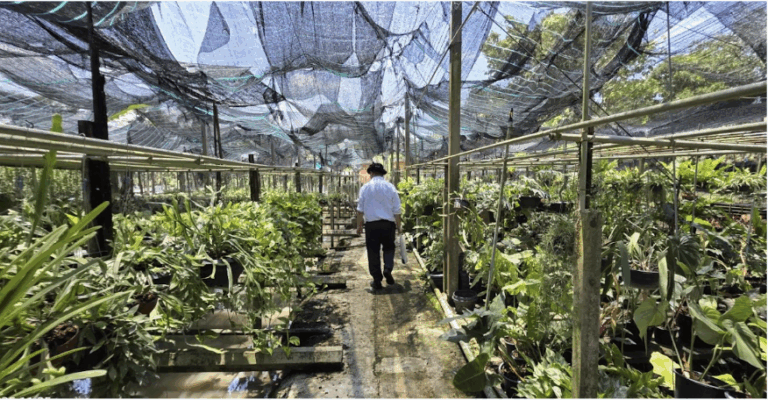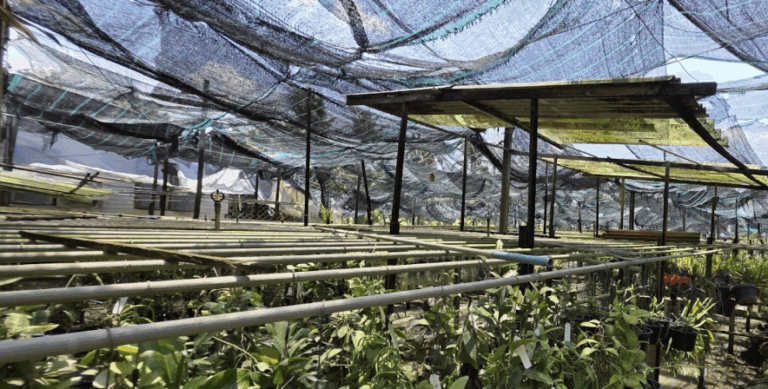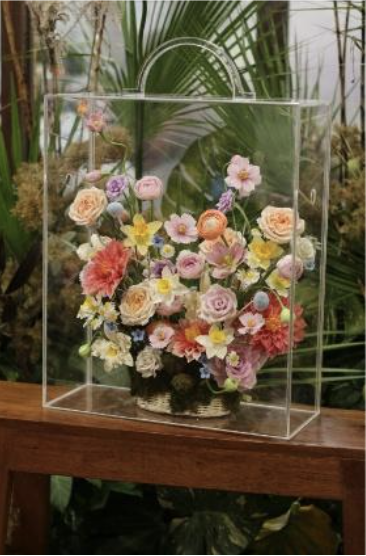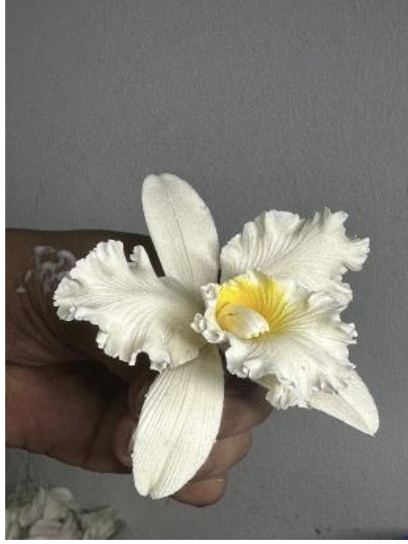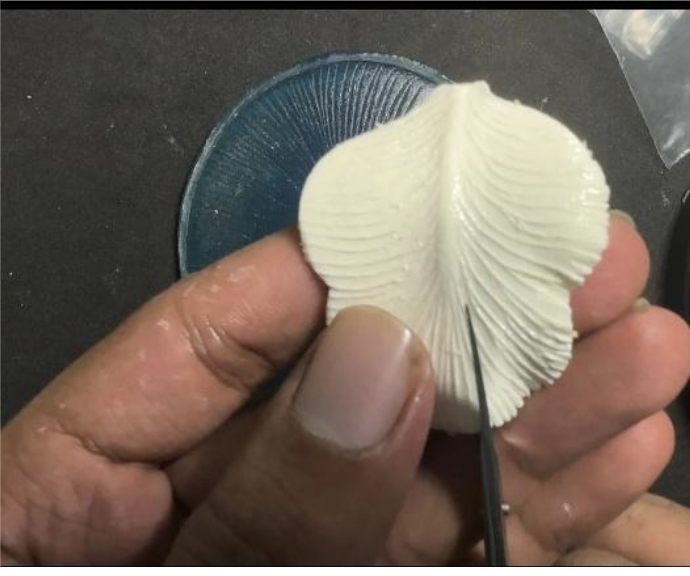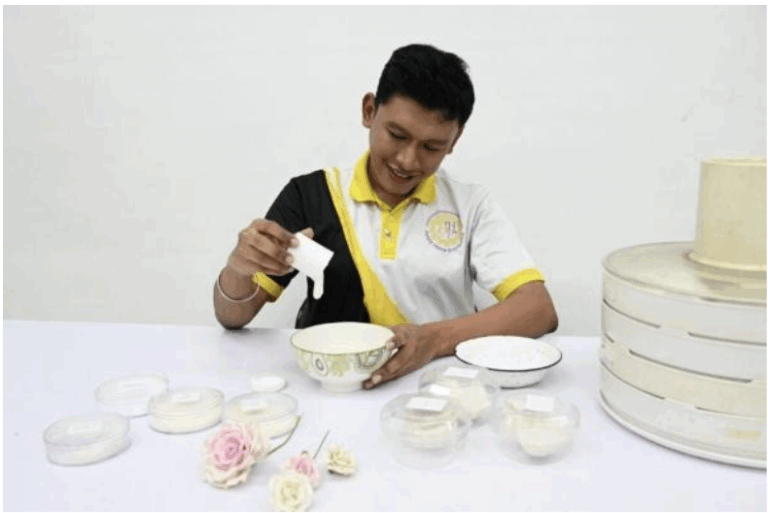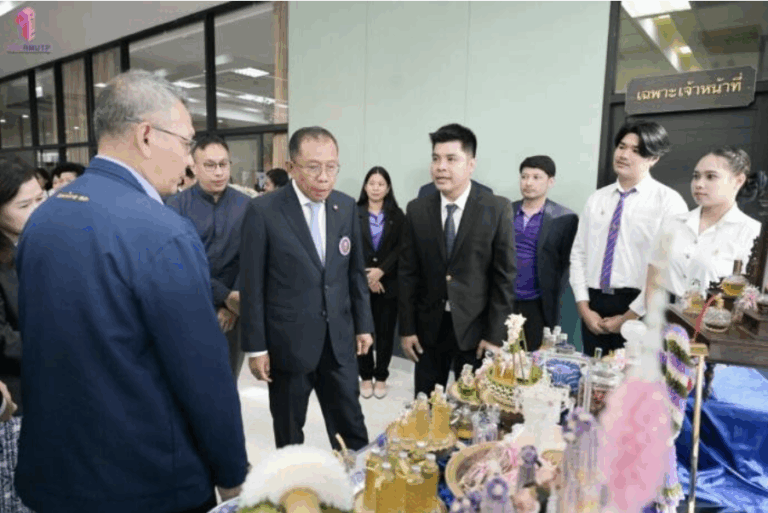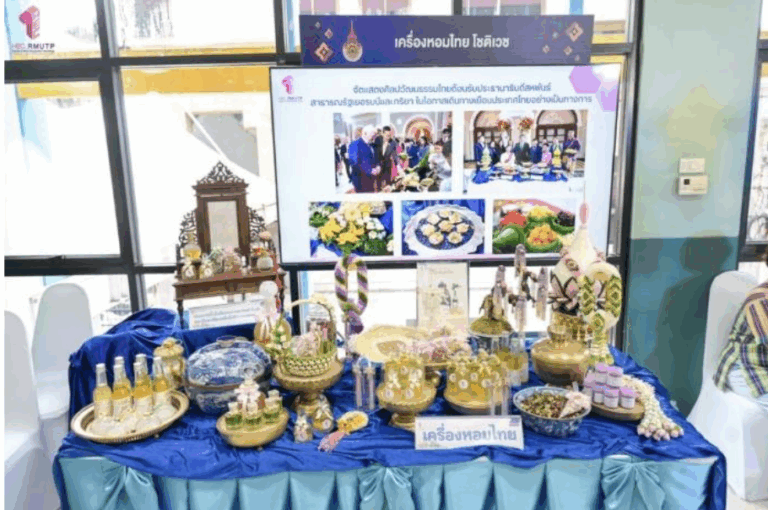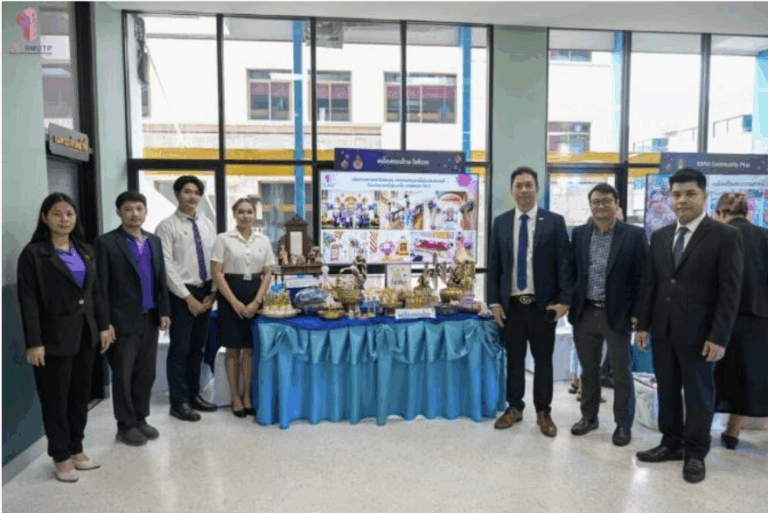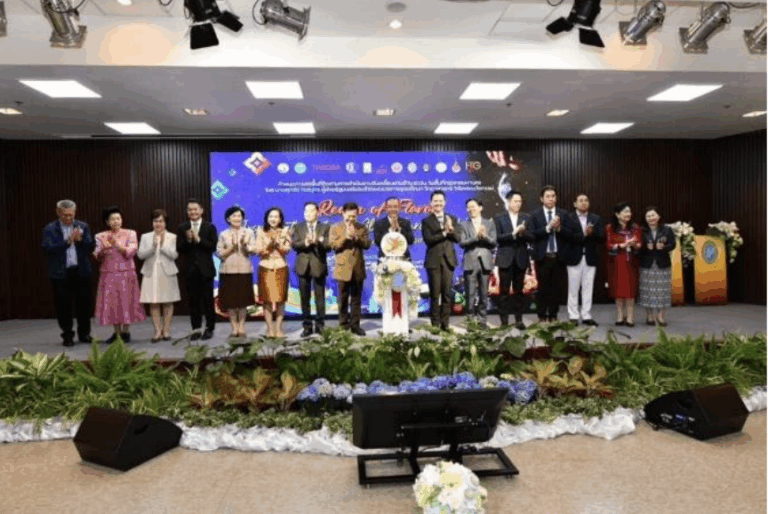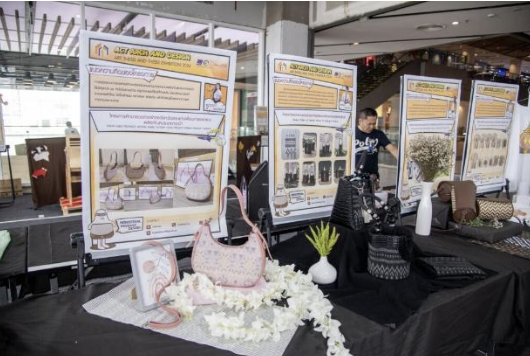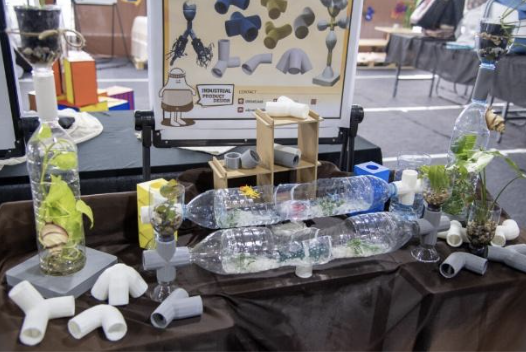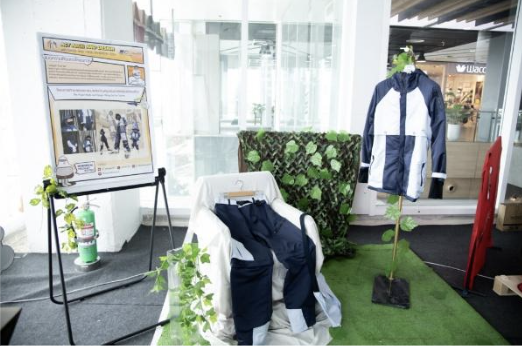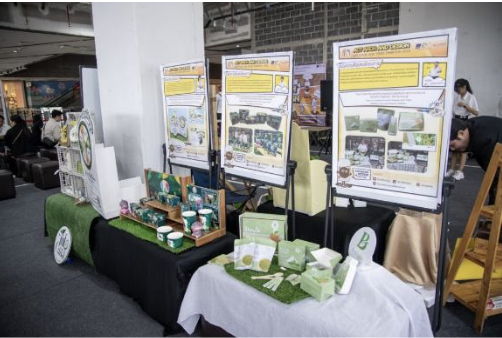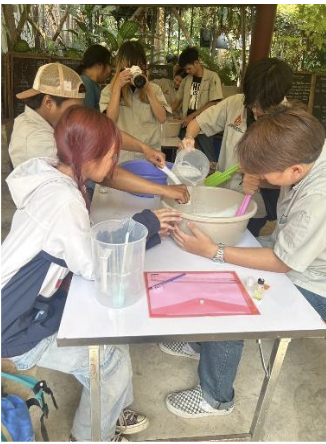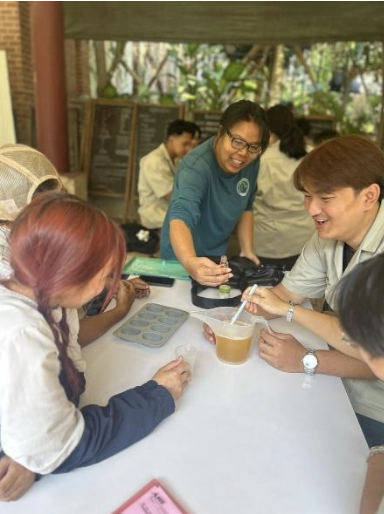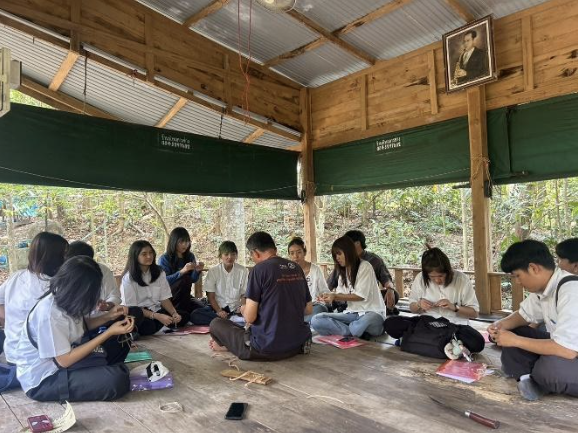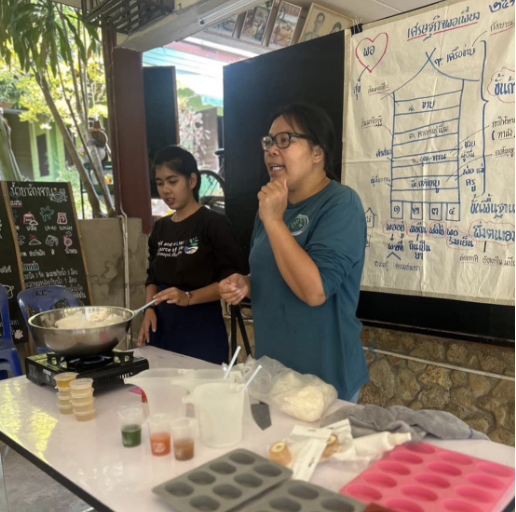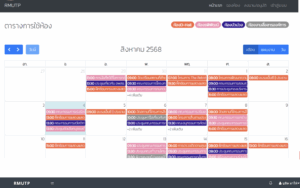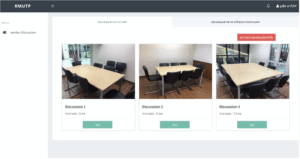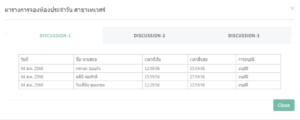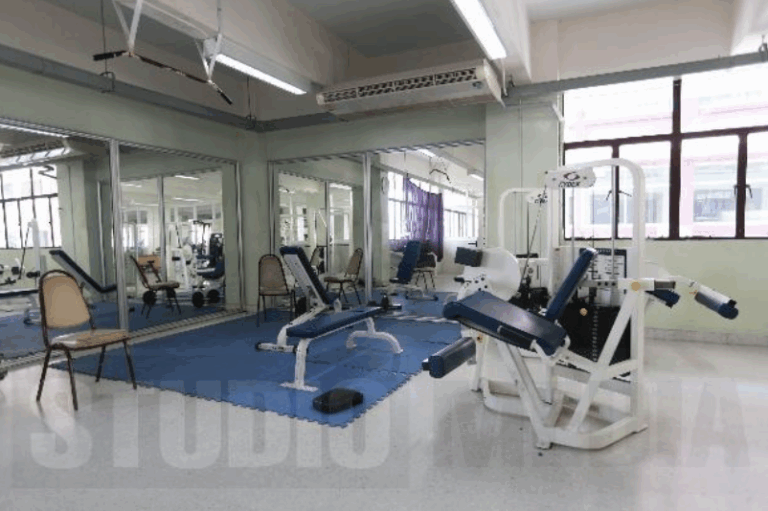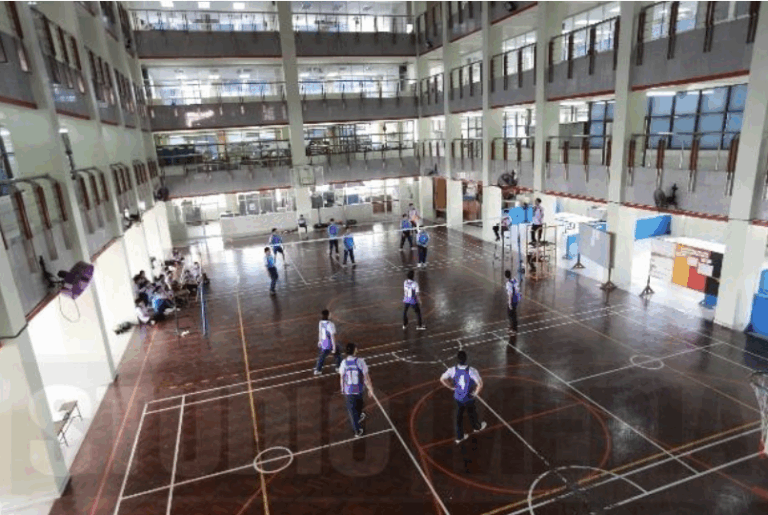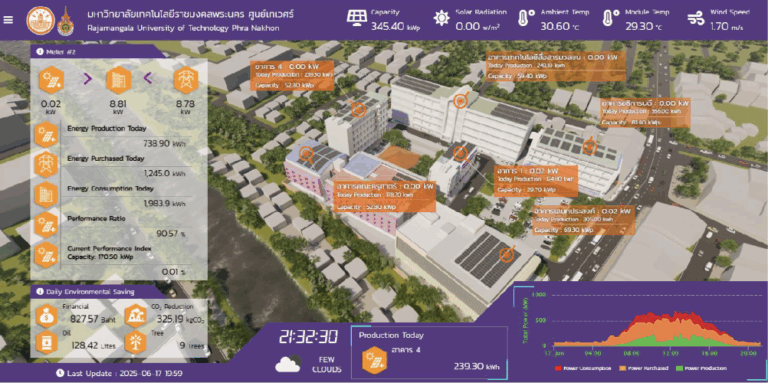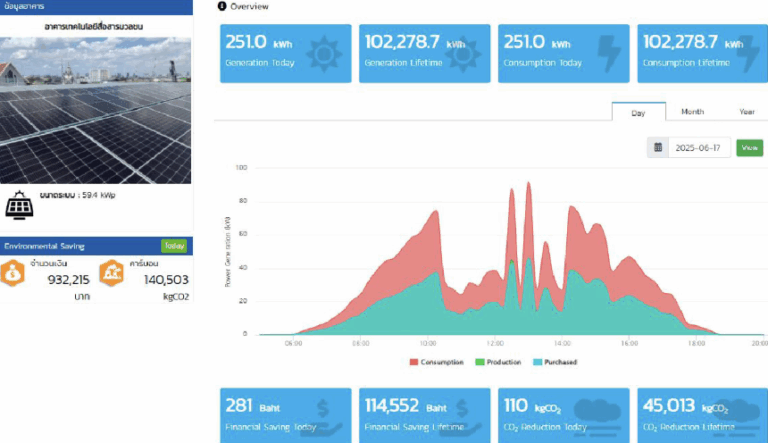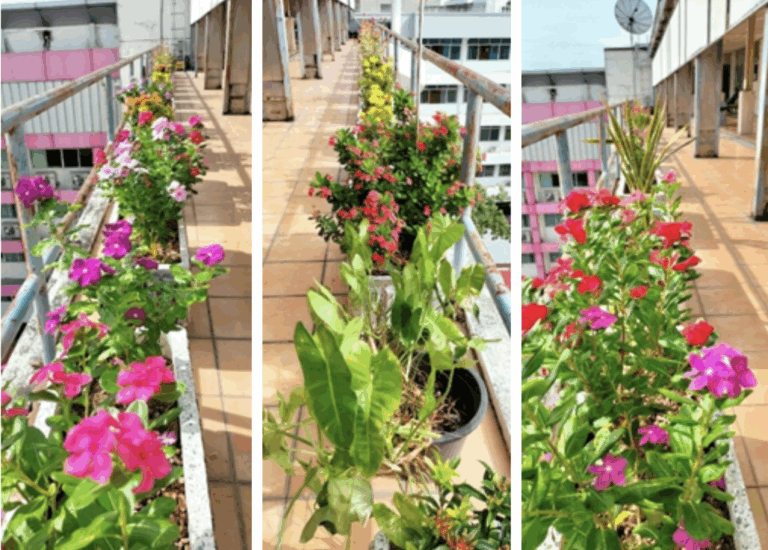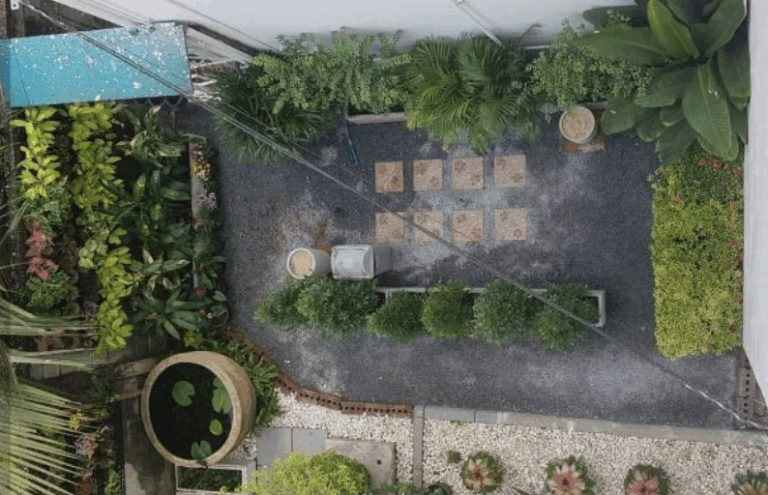Setting and Infrastructure (SI)
Table of contents
Conservation: plant, animal, and wildlife, genetic resources for food and agriculture secured in either medium or long-term conservation facilities
Plant Genetic Conservation Project at Chom Thong Campus
The opening ceremony was chaired by Asst. Prof. Dr. Chantana Papattha, Deputy Director of the Institute of Research and Development of Rajamangala University of Technology Phra Nakhon (RMUTP). Dr. Jaratpim Wangyen and Mr. Naruepon Phiasarntantiwong, lecturer of the Faculty of Industrial Textiles and Fashion Design led the event. The objective of the project was to promote and support business development for entrepreneurs, enhance knowledge derived from local wisdom, and develop products of internationally accepted quality. The event featured the invention of various products using bamboo materials, including bamboo watches, coin purses, and jewelry trays. Activities within the event included practical training sessions on “Product Development and Value-Added” focusing on:
- Watch from the leaf betel palm
- Coin bag from the leaf betel palm
- Tray from the leaf betel palm
The event took place on June 20-21, 2024, at the Yim World Community Enterprise, Nongkrathum Sub-District, Doem Bang Nang Buat District, Suphanburi Province.
Artificial Flowers from Coconut Residue Dough
Rajamangala University of Technology Phra Nakhon (RMUTP) recently launched an innovative initiative led by students from the Faculty of Home Economics Technology, focusing on the transformation of coconut residue dough into artificial flowers. While not a traditional conservation project, this creative approach builds on RMUTP’s dedication to sustainable use of agricultural by-products, supporting the broader objectives of resource efficiency, heritage plant utilization, and community-based conservation.
Craft experts suggested further studies on the shelf life and odor reduction of coconut residue sculpting dough to enhance its quality. The research team plans to refine the product and expand its application to Thai traditional dance accessories, such as ornamental headdresses, crowns, and decorative jewelry, to increase its value.
RMUTP showcases its potential at ‘The Kingdom of Flavors’: Igniting the Future of Global Tourism and Hospitality, Supporting Thailand’s Soft Power Policy through Thai Cuisine.
On May 14, 2025, at “The Kingdom of Flavors: Igniting the Future of Global Tourism and Hospitality,” RMUTP proudly showcased a live exhibition of traditional Thai scented food products, crafted using locally sourced plant ingredients. Led by the Faculty of Home Economics Technology, the exhibition demonstrated how culinary heritage and food-based biodiversity are being preserved and promoted through hands-on educational and cultural activities.
- Promotion of Native Plant Ingredients
Students and faculty presented recipes and products based on Thai regional ingredients, reinforcing awareness of local plant species vital to the nation’s food heritage and culinary biodiversity.
- Educational & Cultural Integration
Through live cooking demonstrations and sensory-based product displays, the project encouraged experiential learning about agricultural resources—supporting both plant conservation and cultural preservation within academic programming.
- Support Thailand’s Soft Power & Sustainable Development
By showcasing these exhibits at a major national event, RMUTP aligns with Thailand’s soft power strategy and fosters appreciation for sustainable food systems rooted in native plant genetics.
Architecture students showcase creative design works.
On April 24–25, 2025, the Faculty of Architecture and Design at RMUTP presented its senior projects and theses at the “ACT ARCH AND DESIGN” exhibition, held at Gateway at Bang Sue shopping cente
While the exhibition primarily highlights creative and sustainable architectural designs, it offers indirect relevance to plant genetic resource conservation in the following ways:
- Green and Biophilic Design Principles
Some student projects emphasized the integration of green façades, rooftop gardens, landscaped courtyards, and plant-based shading systems, illustrating how built environments can support urban biodiversity preservation and enhance local microclimates.
- Sustainable Use of Native Plant Materials
Designs showcasing locally sourced planting schemes reflect a growing appreciation for native flora, promoting awareness of plant species suitable for urban landscaping that also conserve regional genetic diversity.
- Educational Value
By encouraging architectural students to incorporate flora-based elements, the program fosters an understanding of how plant genetic resources can be integrated into sustainable campus and community architecture, aligning with broader agro-environmental goals.
Plant Genetic Conservation Project initiated by Her Royal Highness Princess Maha Chakri Sirindhorn
On February 6, 2025, students and faculty from the Faculty of Architecture and Design participated in the Plant Genetic Conservation Project, a national initiative under the royal patronage of Her Royal Highness Princess Maha Chakri Sirindhorn. The project incorporates the Sufficiency Economy Philosophy and emphasizes the integration of plant conservation principles with creative and professional design skills.
The participants visited the Poompuksa Nature Conservation Learning Center in Nakhon Nayok Province to:
- Study local plant biodiversity and ecological restoration models
- Understand community-based conservation practices
- Explore how traditional knowledge and native species can inform sustainable architectural design
This initiative demonstrates how academic fields beyond agriculture—such as architecture and design—can contribute meaningfully to the preservation and appreciation of plant genetic resources. It encourages students to consider biodiversity, native flora, and sustainability in the built environment, fulfilling both educational and environmental objectives.
Planning, implementation, monitoring and/or evaluation of all programs related to Setting and Infrastructure through the utilization of Information and Communication Technology (ICT)
| Activities/Programs | ICT Utilization | Timeline | Responsible Team/Department | ||
| Planning | Develop a comprehensive, user-friendly room booking system to support scheduling of academic and non-academic spaces. Conduct requirements analysis through stakeholder engagement (faculty, staff, students). | Software development tools for system design and database planning. Integration planning with calendar and facility systems. | Stakeholder interview summaries, system design and requirement documents | Jan 2023 – Mar 2023 | ICT Department, Library Center, Administration Department |
| Implementation | Deploy the room booking system across the university. Ensure multi-device accessibility (web and mobile platforms). | Web-based portal and mobile application launched for live scheduling and room access tracking. | Development reports, launch documentation, system deployment records | Apr 2023 – Present | ICT Department, Library Center, HR Dept, Admin Dept |
| Monitoring | Track room usage patterns, booking volume, and system performance. Address double bookings or access issues through logs. | Automatic system logs, booking analytics dashboard, and IT ticketing system for error resolution. | Usage statistics, booking log data, internal performance reviews | Ongoing (monthly review) | ICT Department, System Administrator |
| Evaluation | Feedback collection from users and system performance review | Online satisfaction surveys and system uptime reports | Survey results,audit documentation | Annually | Internal Audit Unit, Office of the President |
Room booking system
Rajamangala University of Technology Phra Nakhon (RMUTP) has implemented a university-wide Room Booking System using Information and Communication Technology (ICT) to enhance the management of campus facilities. This initiative is part of RMUTP’s strategy to improve the efficiency, transparency, and accessibility of space usage for academic and non-academic purposes.
- Planning
The development process began with a comprehensive needs assessment involving key stakeholders, including faculty members, administrative personnel, and students. The ICT and administrative teams collaborated to design a system that would be user-friendly, scalable, and integrated with RMUTP’s existing scheduling and facility management tools. Documentation of the planning process includes stakeholder interviews and technical design reports.
- Implementation
The Room Booking System was officially launched in April 2023. It includes both a web-based platform and a mobile application, allowing users to check real-time room availability, make reservations, and receive immediate booking confirmations. This multi-device accessibility ensures that all university members can interact with the system conveniently from various locations.
- Monitoring
Since its deployment, the system has been actively monitored using automated logging tools and administrative analytics dashboards. These tools track booking activity, system usage patterns, and help identify scheduling conflicts or technical issues. Performance data is reviewed regularly to support ongoing improvements and efficient space utilization.
- Evaluation
To ensure the continued effectiveness and user satisfaction of the RMUTP Room Booking System, a comprehensive evaluation process is regularly conducted. This phase utilizes data and feedback gathered during system operation to assess its performance and identify areas for enhancement
Impact of Setting and Infrastructure programs in supporting the Sustainable Development Goals (SDGs)
Good Health and Well-being (Fitness center and sport center)
Affordable and Clean Energy (Solar panel)
Sustainable Cities and Communities (Green open spaces)
Rajamangala University of Technology Phra Nakhon (RMUTP) has implemented a range of infrastructure and environmental setting programs that actively contribute to achieving the United Nations Sustainable Development Goals (SDGs). These initiatives are integrated across planning, design, construction, and operation to enhance sustainability on campus. Key programs and their associated impacts include:
- Development of health-supporting infrastructure and wellness spaces to promote SDG 3 (Good Health and Well-being), including the establishment of on-campus health service centers, first aid stations, sports facilities, and green areas for relaxation and mental wellness.
- Construction and renovation of energy-efficient buildings using green building standards that incorporate natural lighting, ventilation, and solar panels—supporting SDG 7 (Affordable and Clean Energy) and SDG 13 (Climate Action).
- Expansion and conservation of green open spaces (over 44% of total land area) to improve air quality, reduce heat island effects, and support SDG 11 (Sustainable Cities and Communities).
- Provision of inclusive sanitation and hygiene facilities, such as accessible toilets and gender-sensitive restrooms to ensure equity and support SDG 3 (Good Health and Well-being) and SDG 10 (Reduced Inequalities).
- Application of digital technology (ICT) to manage infrastructure efficiently, such as the Room Booking System, E-Saraban (digital document tracking), and online maintenance requests—enhancing transparency and contributing to SDG 9 (Industry, Innovation and Infrastructure).
- Design and construction of accessible learning facilities and open areas to ensure that students and staff with disabilities have equitable access to campus resources—supporting SDG 4 (Quality Education) and SDG 10 (Reduced Inequalities).

